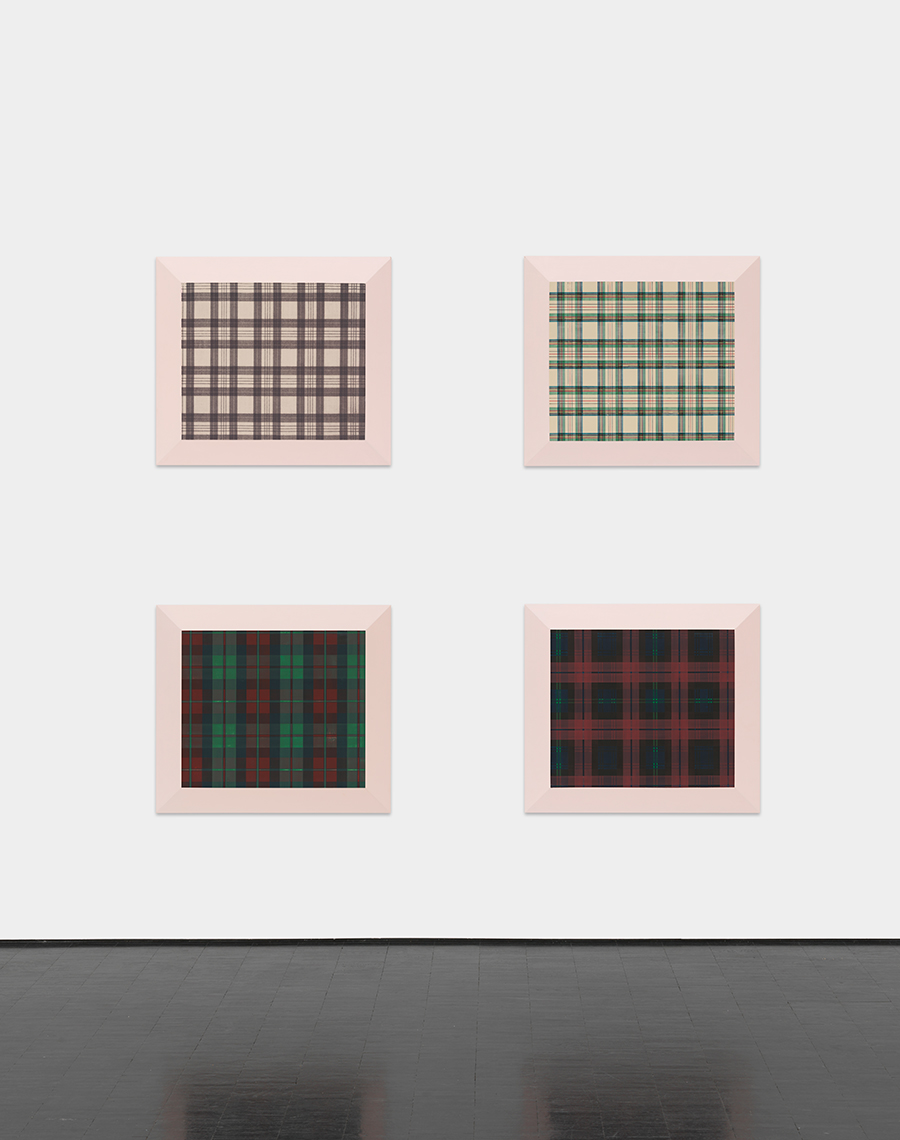The Many Patterns of Susanne Paesler
At Galerie Barbara Weiss, Berlin, the artist’s painted grids speak to how memories are always mediated and wrought
At Galerie Barbara Weiss, Berlin, the artist’s painted grids speak to how memories are always mediated and wrought

‘Pattern Recognition’ at Galerie Barbara Weiss presents a selection of Susanne Paesler’s works from 1991 to 1998. All are meticulously painted renditions of lattice patterns and tartan fabrics that impart a sense of conceptual economy and an impulse towards decoration. But, once you get under their chequered skins, these superficially tame grids vary significantly: some are executed on aluminium, others on canvas or MDF. Some are made with lacquer or acrylic, others are silkscreen-printed. It’s akin to how sheet-cloaked tables and chairs, in a home abandoned for the season, are alike in their disuse – except the sheets are not plain white but the tartan of a woollen scarf or the delicate stripes of a handkerchief. What memories are embedded in Paesler’s remaking of this pattern; what narrative wraps the aluminium board?
The exhibition’s title, with its connotations of artificial intelligence, contradicts the idiosyncrasy of the works. Here, the fabric is not found and applied (as in the works by Sergej Jensen, say, or Michael Krebber after 2000) but rendered with great accuracy by the artist’s own hand; this speaks to how memories, too, are always mediated and wrought. The patterns become uniquely Paesler’s while retaining a sense they could belong to anyone or that, like items of clothing, they are wholly without loyalty to their maker.

By isolating the tartan, Paesler forces a kind of formal dignity onto frumpy home items and their sentimental attachments. In the untitled works from 1993, however, kitsch rears its head slightly further, as she interrupts the stringent patterns with intricate silhouettes of branches. This is more than a flippant gesture: it’s a reference to life in its entirety, which, as we know, is never simply tasteful or restrained – although it might still be neatly arranged.
Four tartan silkscreen prints on MDF (Untitled, 1995) protrude from the wall, their thick borders slanting downwards on every side. In a note collected in her catalogue raisonné from 2014, Paesler, who died in 2006 at the age of just 43, explained that this way of integrating the frame is neither a comment on modernism’s abandonment of the distinction between indicator and indicated, nor a display of postmodern irony. ‘I am not concerned with irony’, she wrote, ‘but with references to a state of not being unbroken.’ In another tartan work, larger but of similar proportions (Untitled, 1997), the artist moves even further towards the unified plane. Here, the frame is likewise integrated but, painted on flat aluminium, it only offers the illusion of depth. Seen in the context of Paesler’s works from 1995, this is not a flattening but a layering: a painting of her own earlier painting; an interpretation of an interpretation of a pattern; a memory of a thing that once was.
An interesting juxtaposition is set up between this work and Untitled (1998), which reinterprets a painting by Lucio Fontana from his pivotal series ‘Spatial Concept’ (1949–50). In Paesler’s version, a funky tube frames a red background with four slashes. If Fontana was invested in the (literal) deconstruction of painting, or its emancipation into space, then Paesler patches the canvas back up, leaving its surface unbroken. A small tattoo-like rose sits in the lower righthand corner of the painting, where the artist’s signature might have been. Where some of Paesler’s later works include her name in the corner, less as a signature and more as a comment on the commodification of art, in this forerunner, the tacky flower acts as an admittance of subjectivity. Here, Paesler disproves the purported non-indexicality of minimalism or abstraction, yet gives nothing away. Her work is too clever to be funny. Still, you can’t help but laugh.
Susanne Paesler, ‘Pattern Recognition’ is on view at Galerie Barbara Weiss, Berlin, from 22 January until 22 February 2020.
Main Image: Susanne Paesler, ‘Pattern Recognition’, 2020, exhibition view, Galerie Barbara Weiss, Berlin. Courtesy: the artist, Estate of Susanne Paesler and Galerie Barbara Weiss, Berlin; photograph: Jens Ziehe
























